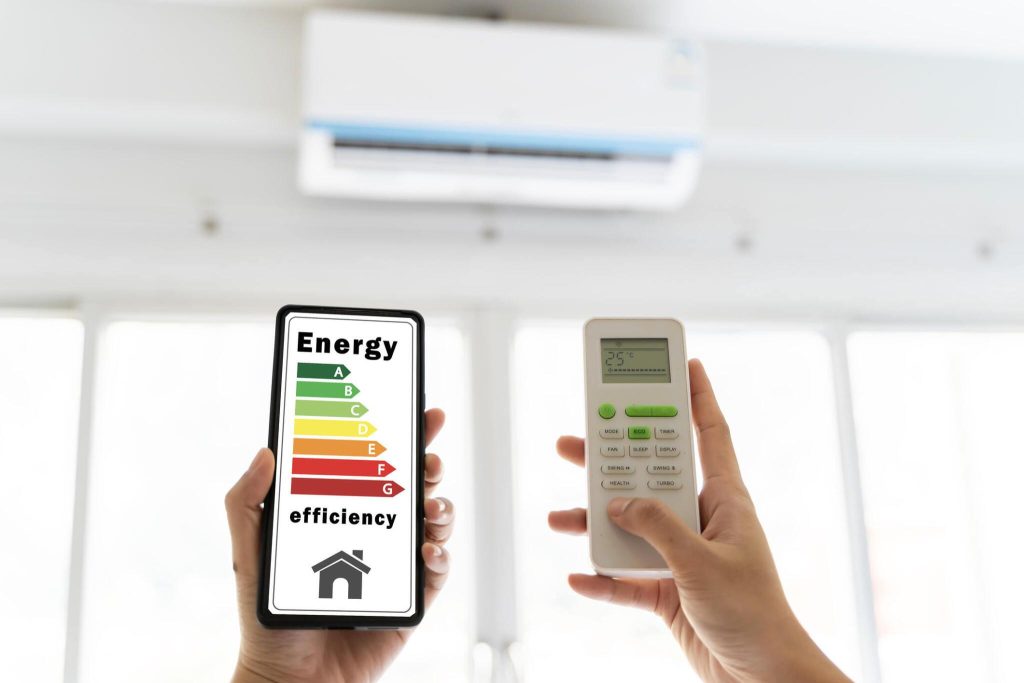At a glance
- Energy rating labels empower consumers to compare the energy efficiency of appliances, aiding in reducing energy bills and minimising environmental impact.
- These labels feature crucial information, including star ratings, estimated annual energy consumption, and water usage, aiding in informed decision-making.
- While the core principles remain consistent, energy comparison figures may vary by state, reflecting regional usage patterns and climates.
In a time of increasing environmental concern and rising energy costs, informed purchases are crucial. Understanding Energy Star ratings and labels helps us select sustainable, cost-effective household appliances. Hence, this guide explains the importance of energy labels, helping you choose wisely for your home and the planet.
The Purpose of Energy Rating Labels
Developed and overseen by the Australian Government, the energy rating label is a vital tool for consumers to compare the energy efficiency of various appliances. This standardised label provides crucial information that allows you to:
- Contrast energy consumption: The label displays an appliance’s estimated annual energy consumption in kilowatt-hours (kWh) or similar units. This allows you to gauge the running cost and potential impact of your choice on your electricity bill.
- Assess energy star rating: The energy star label features a prominent star rating system, ranging from 1 to 6 stars, with a higher number signifying greater energy efficiency. This readily identifiable rating system simplifies comparing different models within the same category.
By utilising the information on the energy rating label, you can make informed decisions that can translate into:
- Reduced energy bills: Choosing appliances with higher star ratings can significantly reduce how much energy you use, and save your electricity bills over the product’s lifespan, leading to increased energy savings.
- Environmental advantages: By opting for energy-efficient appliances, you contribute to reducing greenhouse gas emissions and fostering a sustainable future.
- Improved efficiency: Energy-efficient appliances generally perform their designated tasks with less energy waste, resulting in better energy performance.
Understanding the Label Elements
The energy rating label features key elements that convey crucial information:
- Brand and model: This identifies the specific appliance you are considering.
- Image: A visual representation of the appliance is typically included.
- Star rating: This prominent feature displays the appliance’s energy efficiency rating, with six stars signifying the most efficient and one star the least.
- Estimated annual energy consumption: This figure, displayed in kWh or similar units, estimates the average annual energy consumption that the appliance will use under standard operating conditions.
- Water consumption (for relevant appliances): This section displays the estimated annual water consumption in litres for appliances like washing machines.
- Comparison to similar models: This section may provide a bar chart comparing the amount of energy consumption of the specific model to similar models within the same category.
State-Specific Energy Comparisons
While the core principles of the energy rating label remain consistent across Australia, it’s important to note that specific energy comparison figures may vary slightly depending on your state:
Victoria (VIC): In VIC, energy comparisons use standard usage patterns from the Victorian Department of Environment, Land, Water, and Planning (DELWP). They account for climate, household size, and appliance use.
For example, a 4-star refrigerator in VIC is estimated to use 350 kWh yearly per DELWP’s standards. Remember, this is an estimate; actual consumption may vary with your usage habits.
Other states: Similar to VIC, states like QLD, NSW, SA, and ACT have agencies that set energy comparison standards. They adjust for local factors, making label figures more relevant. Knowing these differences helps you accurately gauge an appliance’s energy use in your area, aiding informed decisions.
Understanding state-specific variations ensures label energy figures reflect local usage, helping you accurately estimate appliance energy consumption and make informed choices.
Additional Factors to Consider
Here are some essential additional factors to consider when making your final decision:
Purchase price: While energy-efficient appliances typically have higher upfront costs, the long-term savings on energy bills can outweigh the initial investment. Conducting a cost-benefit analysis to determine if the potential savings justify the higher initial cost is crucial.
Features and functionality: Ensure the appliance offers the features that best suit your needs. Don’t sacrifice essential features for a slightly higher star rating if it compromises your desired level of convenience or performance.
Brand reputation and warranty: Consider the brand’s reputation for reliability and the warranty offered on the product. A longer warranty can provide peace of mind and save you money on repairs in the future.
Size and capacity: Choose an appliance with the appropriate size and capacity to meet your household’s needs. Selecting an appliance that is too large can lead to unnecessary energy consumption and wasted space.
User reviews and ratings: Checking online reviews and ratings offers insights into appliances’ real-world performance, complementing energy label data and helping you make informed decisions.
Combining the insights from the energy rating label with these additional considerations allows you to make well-informed choices that benefit your wallet and the environment.
Beyond Efficiency: Additional Environmental Considerations
It’s important to consider other environmental factors when making purchasing decisions:
- Sustainability of materials: Look for appliances manufactured with recycled materials or materials sourced from sustainable sources. This can help reduce your environmental footprint beyond just energy consumption.
- End-of-life disposal: Consider the ease and environmental impact of disposing of the appliance at the end of its lifespan. Opting for appliances that are easily recyclable or have responsible disposal programs can minimise environmental impact.
- Water efficiency: For appliances that use water, consider their water efficiency and energy ratings. This can help you choose appliances that conserve water, a precious resource in many parts of Australia.
Considering these additional environmental factors, you can make responsible choices to contribute to a more sustainable future.
Empowering Informed Choices
Understanding energy rating labels empowers you to become a more conscious consumer. Using the label information and this guide’s extra factors, you can select energy-efficient appliances that meet your needs and budget. Remember, every informed choice, however small, contributes towards a more sustainable future.
By seeking out energy-efficient appliances, you can reduce your environmental impact and contribute to a more sustainable future for future generations.
This comprehensive guide equips you with the knowledge and resources to make informed choices. So, the next time you’re in the market for a new appliance, remember the power of the energy rating label and use it to guide you.
-
Comprehensive insights into the energy bill relief fund in Australia
5 May 2024
Energy
-
Find the best electricity deal for electric vehicle charging
28 April 2024
Gas & Electricity
-
Understanding energy demand charges: A guide for business owners
25 April 2024
Energy


